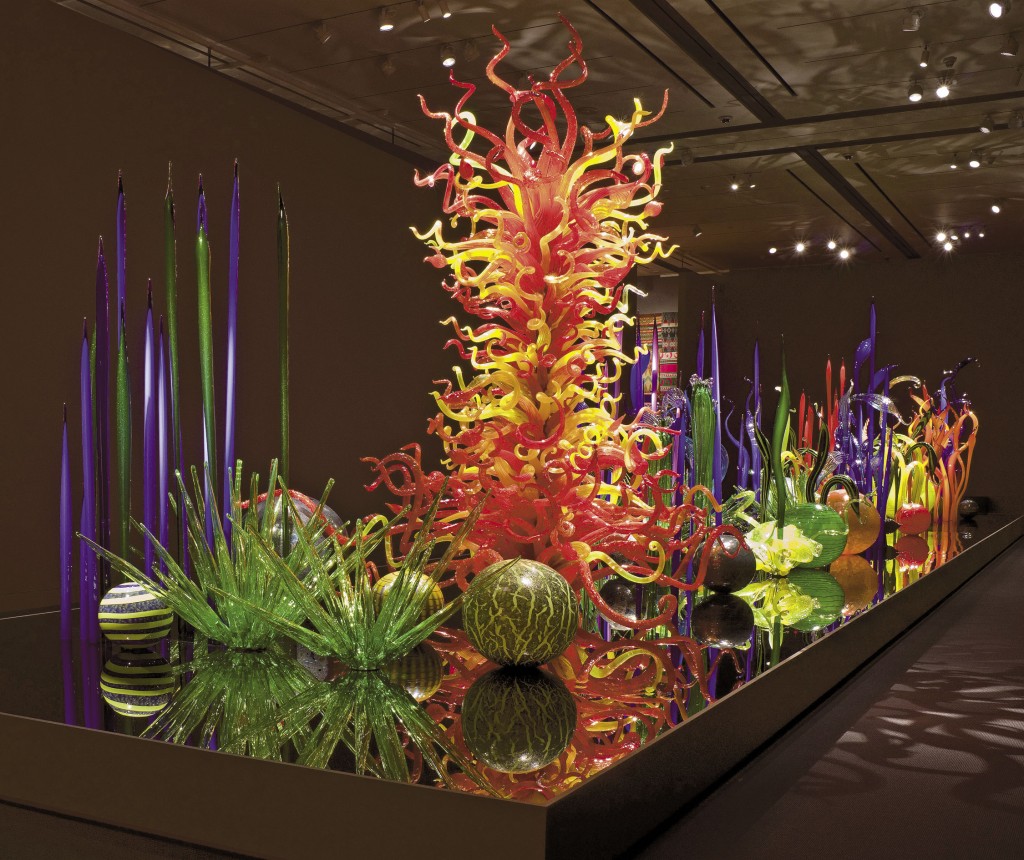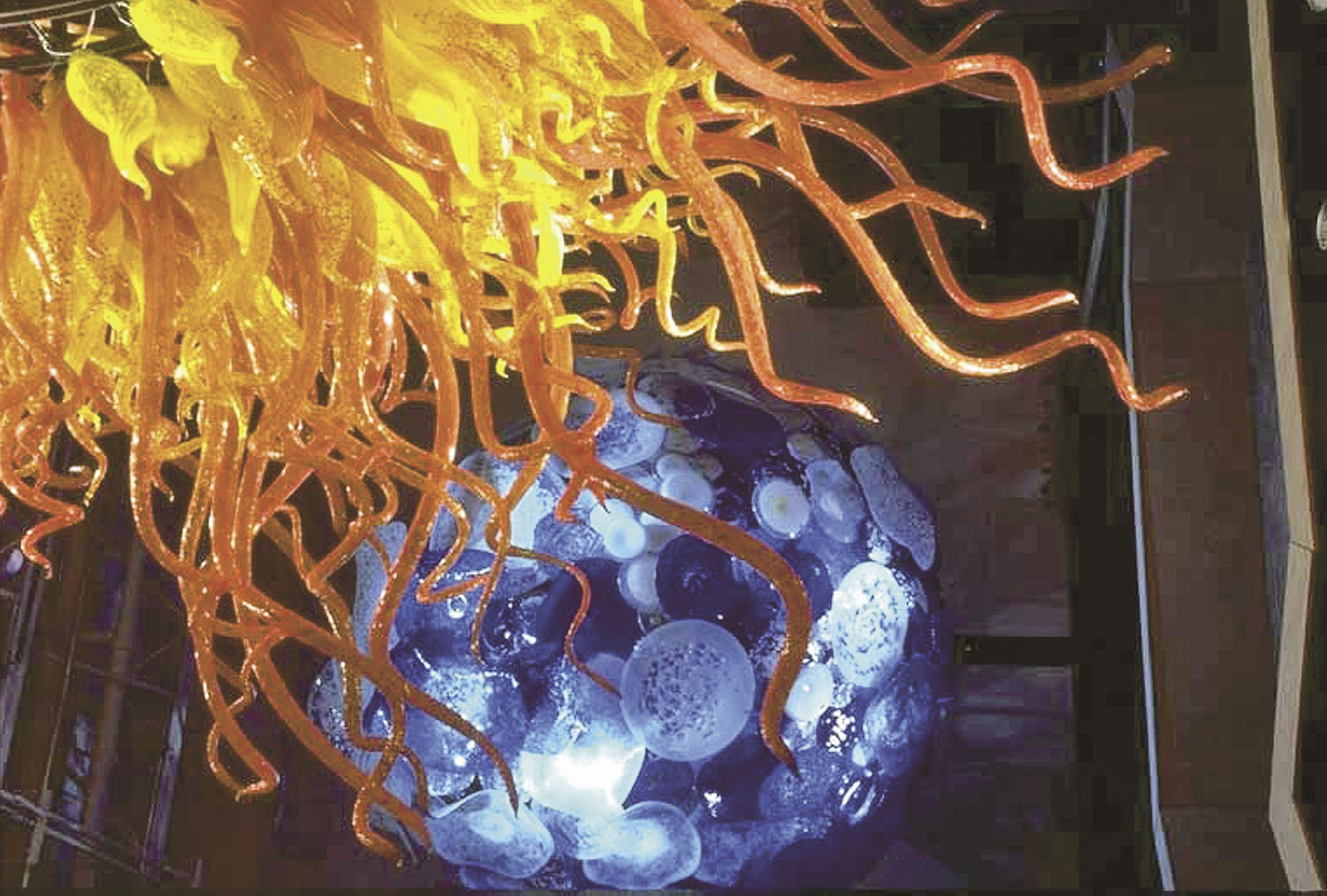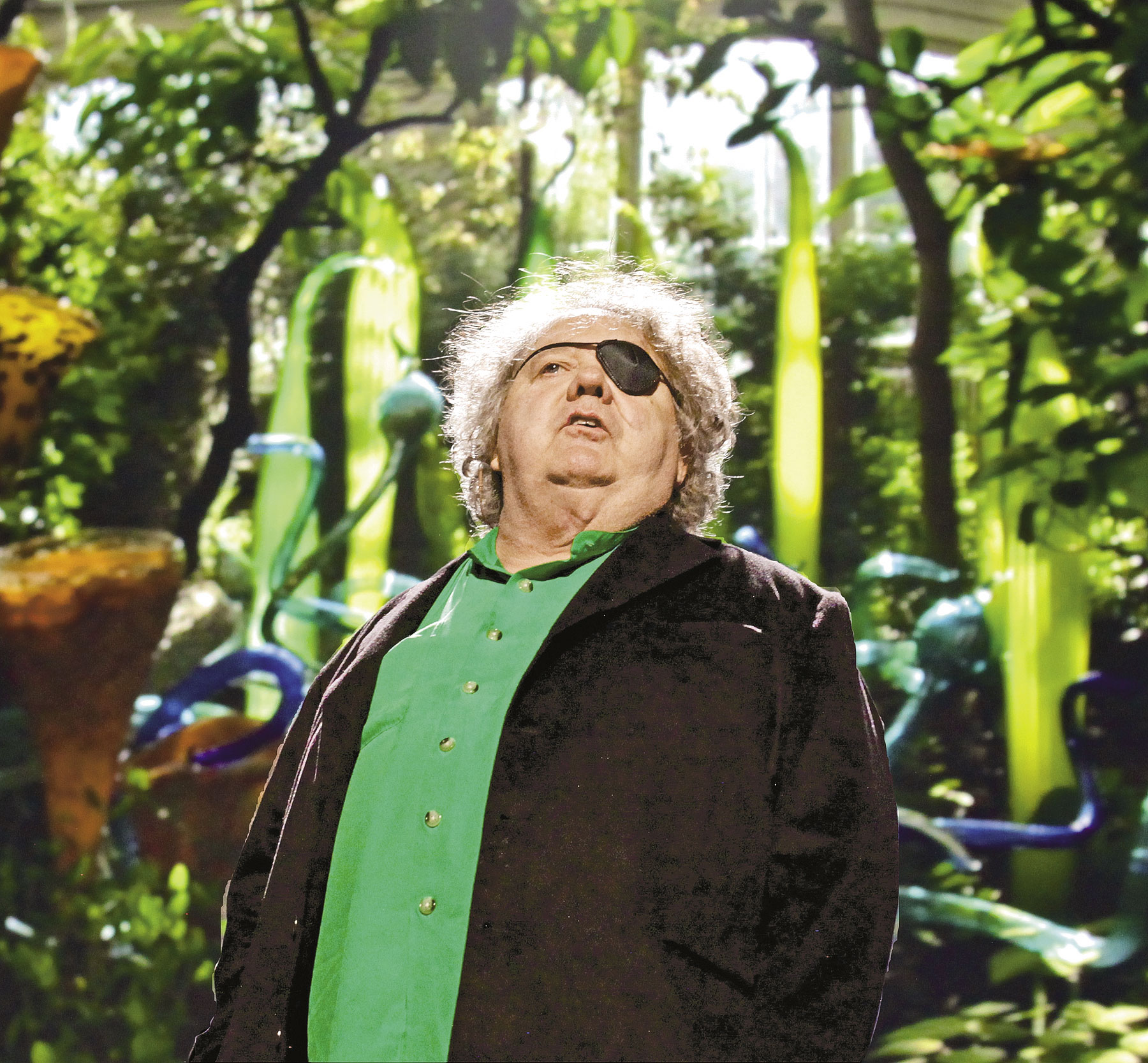Denver Botanic Gardens has presented the Rocky Mountain Region’s first major outdoor exhibition of artwork by celebrated American artist Dale Chihuly. The exhibition is on view at the York Street (1007 York Street in Denver) location until November 30, 2014. Informed by nature, each installation responds to surrounding plants, flowers and architecture.
The exhibit has gotten a mixed reception to date. The Denver Post managed to both condemn and praise the display in separate parts of the paper. In its “Ärts and Culture” section it blasted the exhibit as “invasive” and “fake” while over on its editorial page the paper hailed it as a “visual tour de force.”
Chihuly’s sculptures — ranging in size and style from small water floats to a 30-foot tower — have added bold colors to the Gardens’ 24-acre urban oasis. Site-specific sculpture installations are presented in 12 locations throughout the Gardens. A looping video features a comprehensive survey of his work and process. “I would say his work is pretty organic in nature and that would be the way he approaches things,” said Britt Cornett, the head of the exhibition.
Shop at the Gardens offers a retail gallery of original Chihuly works. No artwork will be on view at Mordecai Children’s Garden or the Chatfield site. “We are thrilled to welcome Chihuly to Denver Botanic Gardens,” says Brian Vogt, CEO of the Gardens. “This special opportunity brings an internationally recognized artist to the Denver metro area and the Rocky Mountain West. The iconic artwork enhances the Gardens’ living collection in a powerful, yet graceful way that is at once familiar and other-worldly.”
Born in 1941 in Tacoma, Washington, Dale Chihuly was introduced to glass while studying interior design at the University of Washington. After graduating in 1965, Chihuly enrolled in the first glass program in the country, at the University of Wisconsin. He continued studies at the Rhode Island School of Design (RISD), where he later established the glass program and taught for more than a decade.
In 1968, after receiving a Fulbright Fellowship, he went to work at the Venini glass factory in Venice, Italy. There he observed the team approach to blowing glass, which is critical to the way he works today. In 1971, Chihuly cofounded Pilchuck Glass School in Washington. With this international glass center, Chihuly has led the avant-garde in the development of glass as a fine art. He lost an eye in an automobile accident in 1976 in England, and he now sports a rakish looking eye patch.
His work is included in more than 200 museum collections worldwide and Chihuly is one of three living American artists to have a solo exhibition at the Louvre in Paris. Chihuly does have his critics some of whom claim his artistic repertoire tends to be rather limited in nature
The Denver Post Fine Arts Critic Ray Mark Rinaldi stated, “It’s hard to say why the garden would let an invasive species like Chihuly take over so completely. Why put fake flowers next to real ones? It’s tempting to connect it to the number of tickets it will sell, offering quick thrills over that thoughtful throughline that can make art and nature copacetic.” He was not through, “It’s all competition for the plants and flowers and disruptive to the paradise so many of us run to when we need to escape the urban clutter.” He went on to trash the new construction projects at the Gardens indicating that “greenery might be a better option.”
 Apparently in fear of what city officials, Botanic Gardens administrators and Chihuly fans might say, The Post prepared a somewhat unique editorial underneath another editorial call for more gun control. In it the Editorial Board opined, “And take it from us.” [And apparently not from The Post’s Fine Arts critic.].”Far from being a distraction from the main core attractions . . . the Chihuly sculptures fit niftily into the landscape, often with stunning results.” The Editorial Board went on to fulsomely praise all the new construction projects on the premises.
Apparently in fear of what city officials, Botanic Gardens administrators and Chihuly fans might say, The Post prepared a somewhat unique editorial underneath another editorial call for more gun control. In it the Editorial Board opined, “And take it from us.” [And apparently not from The Post’s Fine Arts critic.].”Far from being a distraction from the main core attractions . . . the Chihuly sculptures fit niftily into the landscape, often with stunning results.” The Editorial Board went on to fulsomely praise all the new construction projects on the premises.
The controversy should draw great crowds to the Botanical Gardens this summer and fall with folks wanting to see what the hubbub is all about and determining which side of the dispute they fall on.
The Denver Botanic Gardens’ summer hours are 9 a.m. to 9 p.m. Weekdays and 8 a.m. to 9 p.m. Saturday and Sunday. For more information, visit their website at www.botanicgardens.org.


